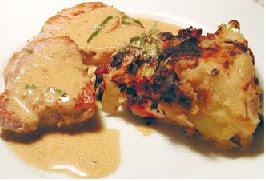A Healthy Guide To Good Nutrition
Whether you are at your ideal weight or striving to reach your weight goal is it simply a matter of burning more calories than you take in? The answer, I suggest, is no! Overall body health improvement as well as weight gain or loss must be factored in to the equation or you could be heading for problems. Correct nutrition can help to reduce the risk of a miriad of health-related problems, the most frightening of which are surely heart disease and cancer. Proper nutrition, however, entails eating many different foods, monitoring your consumption of some food and beverage items, and counting calories. Good diets offer balanced nutrition that reduces cholesterol, blood pressure, and helps with weight control.
To function properly, your body must have the correct combination of nutrients:
Carbohydrates. They are the primary source of ammunition in your diet. The body uses carbohydrates to build glucose which can be used immediately or stored in your body for later. Too much glucose, however, is stored as fat. There are two types of carbohydrates - simple and complex. Sugars are simple carbohydrates. Starches and fibers are complex carbohydrates.
Proteins. Proteins help your body build and maintain muscles and other tissues. They also function in the creation of hormones. Like carbohydrates, excess protein is stored as fat.
Animal and vegetable are the two major types of proteins. Too much animal protein can cause high cholesterol, as it is high in saturated fat.
Fat. Strange as it may seem; fat is another nutrient your body requires. It comes in both saturated and unsaturated forms. Saturated fat puts you at risk of health problems. Unsaturated fat is healthy, but if it goes through any type of refinement process, it can become saturated fat.
Vitamins. These are also required nutrients. Different vitamins perform different tasks within the body. They can work with the metabolism to help with energy levels for any task you can think of that you need your body to perform. It has also been noted that certain vitamins can prevent disease.
For example, vitamins A, C, and E, also called antioxidants, can assist with the prevention of coronary artery disease by keeping build up from occurring on artery walls. Vitamin B-1 is needed for digestion and proper nervous system function. Vitamin B-2 is needed for normal cell growth. Vitamin B-3 helps to detoxify your body. Folic acid assists with production of red blood cells. Vitamin D assists with the absorption of calcium. Vitamin K helps your blood clot.
Minerals and trace elements. These are another nutrient your body requires. Both are used in many different body processes. Minerals like chlorine help make your digestive juices. Phosphorus helps build strong bones. Both can be found in the foods we consume, but with a trace element, your body just needs a tiny amount. Salt is one final nutrient your body requires. You should not consume more than 2400 milligrams per day, though, as it might raise your blood pressure.
You should follow several guidelines to create a well balanced, nutritional diet. First, try to consume two and one half cups of vegetables and two cups of fruit each day. When making your selections for each day, be sure to choose a good variety. A good rough guide is to eat as many different colors as possible, this will help you to select from all five vegetable subgroups at least four times per week.
You should eat at least three ounces of whole grain products each day. At least half of your grain intake should be whole grain based. Milk should also be part of a healthy diet. Consume at least forty-eight ounces of low fat milk or milk products on a daily basis. Your total fat intake should only be between ten and thirty percent of your calories. Most of the fats you consume should be in the form of unsaturated fats, as saturated fats can do much to damage your health. Meat, poultry, dry beans, and milk or milk products should all be lean, low-fat, or fat-free. Less than ten percent of your calories should come from saturated fats, and you should always try to avoid trans-fatty acid.
Fiber-rich fruits, vegetables and whole grains should be a regular part of your diet as should potassium rich foods. Alcoholic beverages should only be consumed in moderation.
Excellent nutrition is the basis of a healthy diet.
About the Author:Edwina Hanson is a vegetarian. You can get her free 127 page cookbook entitled "Delectable Vegetable Dishes", which contains over 300 nutritional and tasty recipes, by going to http://www.vegetarian-and-vegan.com.
Read more articles by: Karen Wilkinson
Article Source: www.iSnare.com



